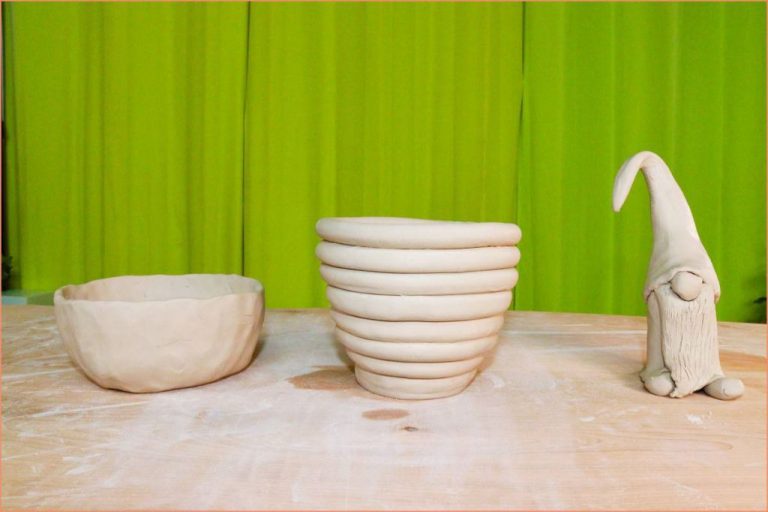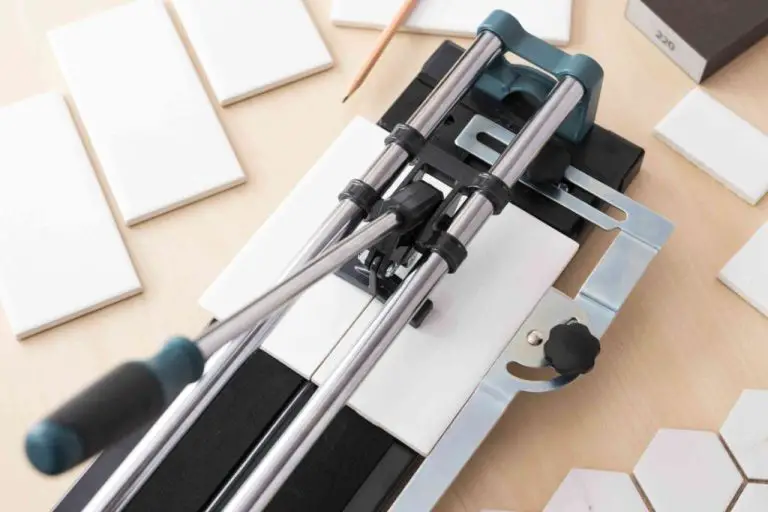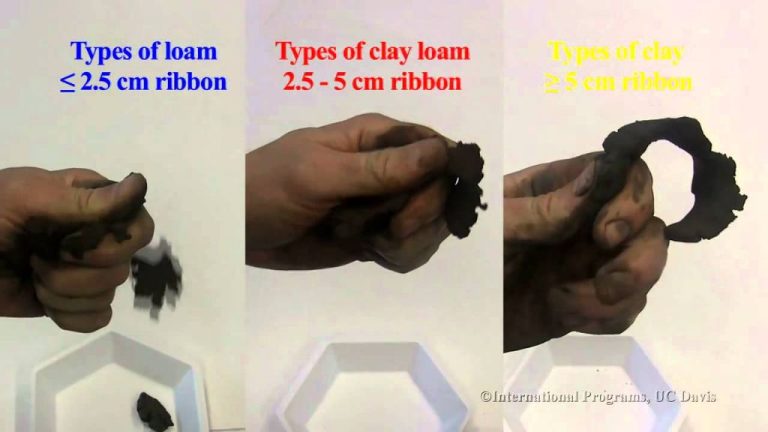How Do You Make Hardened Clay Soft Again?
Clay is an incredibly versatile art material used by sculptors, potters, and crafters of all ages. However, over time unused clay can dry out and become hardened, making it difficult or impossible to work with. The good news is that in most cases, clay can be rehydrated and made soft again through various techniques.
This article will explain several methods for reviving hardened clay so you can breathe new life into old projects and reduce waste. With a little time and effort, that rock-hard lump can become malleable and usable once more.
Store Clay Properly
One of the best ways to keep clay soft and workable is to store it properly when you’re not using it. Clay is hygroscopic, meaning it absorbs and releases moisture easily. When exposed to air, clay will start to dry out and become hard and brittle.
To prevent this, always store unused clay in airtight plastic bags, containers, or ziplock bags. Make sure to squeeze out any excess air before sealing. This creates a microclimate that retains moisture and prevents the clay from drying out. Stored properly in airtight packaging, clay can stay fresh and workable for months.
Avoid storing clay loosely wrapped in paper or cloth, as these materials allow moisture to escape. Never leave clay out on a work surface longer than necessary. Always re-wrap it tightly in plastic as soon as you’re done sculpting or using it. Following proper clay storage methods will extend its shelf life significantly.
Revive Clay With Water
Soaking hardened clay in room temperature water can rehydrate it. The water molecules gradually soften and penetrate the clay, restoring flexibility. This revival process may take several hours or overnight, depending on how dehydrated the clay has become. Make sure the water fully covers the clay while soaking. Change the water periodically if it starts to discolor. Once revived, the clay can be gently kneaded by hand until it regains a smooth, pliable texture. Take care not to over-soak the clay or let it sit in water too long after softening, as this can make it slimy or prone to cracking.
Use Clay Softener
One way to soften hardened clay is by using a clay softener product. Clay softeners are specially formulated to restore dried out polymer clay and extend its workability.
Popular clay softeners include glycerin, liquid polymer clay, and petroleum jelly. Glycerin is one of the most effective options for softening clay. It works by preventing moisture loss in the clay and allowing it to become flexible again.
To use glycerin, mix a few drops into the clay and knead it in until the clay feels soft. You can add more glycerin as needed to reach the desired consistency. The glycerin allows the clay to retain moisture so it doesn’t harden as quickly.
Other softeners like liquid polymer clay and petroleum jelly work similarly by introducing an emollient into the clay that makes it pliable again. Always start with small amounts and add more as needed when using clay softeners.
Try Steam
Exposing hardened clay to steam can be an effective way to reintroduce moisture and soften it up again. Steam introduces gentle heat while also imparting water back into the clay. There are a few easy ways to use steam:
- Use a dedicated steamer, like those designed for steaming vegetables or dumplings. Place the hardened clay in the steamer basket and run the steamer until the clay becomes soft again.
- Boil water in a pot or kettle and hold the clay over the steam. Be careful not to let the clay touch the actual boiling water, which could scald or damage it. Keep exposing it to the steam until it reaches the desired softness.
- Run a very hot shower and place the clay in the bathroom. The steam from the shower will slowly permeate and soften the clay. Prop open the bathroom door to allow some of the steam to escape and keep the room from getting too hot.
Steam works by reintroducing moisture to the outer layers of the clay first. Then the moisture works its way down into the center as you continually expose it to the steam. Check the clay frequently and stop steaming once it regains the proper soft, pliable texture.
Use Plastic Wrap
Wrapping hardened clay in plastic wrap or bag and letting sit can create a greenhouse effect. The plastic traps any moisture still left in the clay and prevents further drying. Over time, this greenhouse effect helps rehydrate and soften the clay.
To try this method, take your hardened clay and wrap it thoroughly in plastic wrap or place it in a sealable plastic bag. Remove as much air as possible before sealing the plastic. Let the wrapped clay sit for 24-48 hours and check for softness. The plastic should cause moisture to be retained in the clay, allowing it to absorb water from the air and soften up over time.
Plastic wrap can slowly bring very dry clay back to life. Just make sure to keep the clay wrapped when not in use, allowing the softening process to continue. This gradual rehydration and plastic greenhouse effect often works better than quick methods like microwaving. With patience, your clay can return to a workable state.
Consider Oil
Applying a small amount of mineral oil can make clay more pliable and workable. The oil helps lubricate the clay particles, allowing them to slide over each other more easily. This restores some flexibility to stiff, dry clay. However, too much oil can make the clay overly sticky or greasy, so only use very small amounts.
Try rubbing a few drops of mineral oil over the clay, kneading it in with your fingers. See if this brings back some softness before adding more. Always do a test first on a small piece of clay to ensure the oil does not negatively impact the clay’s properties or your intended project.
Microwave Clay
One method to soften hardened clay is using short bursts in the microwave. Start with 10-15 seconds at a time, checking the clay in between bursts. The microwave helps heat up any moisture left in the clay, bringing it back to a workable state.
Be very careful not to overheat the clay when microwaving. More than 20-30 seconds can cause the clay to burn or scorch. If you see any smoking or scorch marks, stop immediately. Burned clay will be damaged and unusable.
Microwaving works best for small amounts of clay rather than a large block. Try breaking hardened clay into smaller pieces before microwaving. And remember to never put metal clay tools or armature in the microwave.
When Clay Can’t Be Saved
Sometimes clay becomes so dry and brittle that it is past the point of being revived. If the clay has deep cracks or is crumbling apart, it likely cannot be softened again. The process of repeatedly drying out clay causes it to lose its plasticity over time. Each cycle of wetting, shaping, and drying clay leads to evaporation of the water molecules that allow clay to be molded. Eventually the clay’s structure changes permanently.
Signs that clay cannot be rehydrated include:
- Cracks or fissures throughout the clay
- Grainy or crumbling texture
- Inability to hold a shape when wet
- Extreme brittleness, even when wet
At this stage, it is usually not possible to revive the clay. It is best to discard severely dried clay and replace it with a fresh block or packet of clay. Storing clay properly in an airtight container can help prevent it from drying out completely and becoming unusable.
Conclusion
As we’ve discussed, there are several effective techniques for reviving hardened polymer clay. Adding water, using a clay softener, steaming, wrapping in plastic, and even microwaving can help make rigid clay malleable again. The technique that works best often depends on the brand and composition of the clay, as well as how long it’s been hardened. Don’t be afraid to experiment with different methods to see which one restores your clay to a workable state.
With some effort and patience, hardened clay can almost always become soft and pliable again. Even if one technique doesn’t do the trick, trying a different approach or combination of methods will usually yield success. The key is to reintroduce moisture and/or heat to the clay particles in a gradual way. Avoid over-manipulating the clay as it softens to prevent it from becoming sticky.
Reviving hardened polymer clay may take some trial and error, but it’s very possible with the right techniques. Don’t give up on clay that seems too far gone. With the methods discussed here, you can breathe new life into rigid clay and continue your creative projects.



